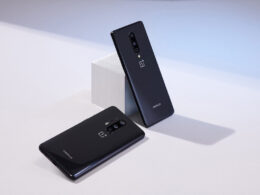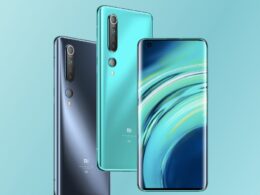Samsung Galaxy S is a 13.3 inch laptop with 8GB of RAM and upto 512 GB of SSD storage. Samsung Galaxy Book S runs on Windows 10 Home operating system. Galaxy Book S starts from $999. It’s well and good, but what’s special about it ? Galaxy Book S comes in two variants. One running on Qualcomm’s Snapdragon 8cx processor, a Windows machine running on ARM architecture. The other variant runs on Intel i5- L16G7 processor.
Many Tech reviewers including Linus Sebastian quotes that the variant of Galaxy Book S running on Intel processor might be the savior for Intel. But why is it so?
What makes it so special for Intel ?
Intel has been facing a tough competition these days from both AMD on PC side and ARM on mobile computing side, especially after Apple ditched Intel in favor of ARM processors. (Check out our post about Apple ditching Intel ) Notebook’s these days are becoming more and more compact with smaller heat dissipation systems and smaller battery which makes ARM with its low power consumption an ideal choice for notebooks especially after ARM processors started performing on-par with Intel notebook chipsets on some cases.
Introducing Intel “Lakefield” Architecture
Intel i5-L16G7 has something what Intel calls as “hybrid CPU” architecture. The thing that makes ARM so power efficient but also powerful is because of its multi-core architecture with certain high performing cores to do more powerful tasks and low performing cores to perform daily tasks like checking the mail or watching the video. Intel attempts to replicate the same with this new class of architecture called “Lakefield”.

So, how does it perform? Both i5 variant and Qualcomm variant has the same battery life realistically. Qualcomm boasts with its 5G connectivity option whereas Intel variant comes with slower LTE connectivity. Performance wise, to be frank Windows running on ARM is pretty incomplete. See, traditional Windows applications are built for x86 architecture. Applications like Photoshop are built to run on x86 architecture. When you run those applications on ARM architecture, Windows has to emulate to run apps built for x86 on ARM. This slows the application down and, on some case, outright break them. But apart from issues with Windows, is the Qualcomm variant powerful ? Yes, Qualcomm 8cx contains the same Kryo 495 cores that powers Snapdragon 855. So answering your question, is it powerful for your day to day tasks, Yes. Can you edit a video? No. But you can try to if you are patient.

And that’s where Intel still has its edge. From Apple’s Mac OS to Windows, switching away completely from x86 architecture would mean application developers would have to re-code their entire applications on some case. Until ARM powered devices have a considerable market share in the market, developers would be hesitant to code their applications for ARM. Intel still has some time to save itself before it loses considerable market share in notebooks.
Coming to the question should you buy the Galaxy Book S ? If you are tech geek maybe. But do you really want to spend $999 on a still to complete ARM laptop. Even if you are considering to buy i5 variant, there are better alternatives in the market. But if you are a person who is looking for excellent battery life with on-the go connectivity options, then Yes, Galaxy Book S might be an better option for you.
For some time, Intel has been criticised for its poor thermal performance, indirectly translating to high power consumption. ARM consumes far less power and produces less heat when compared to its Intel counter-part without any loss in performance. However, Intel’s Lakefield Architecture is set to turn tables in favour of Intel with its improved thermal and power efficiency. Time would only tell if Apple left Intel so soon.
Stay tuned for our post about Lakefield architecture and Intel’s upcoming Tigerlake architecture.
Subscribe to our page to stay in touch us.








1 comment